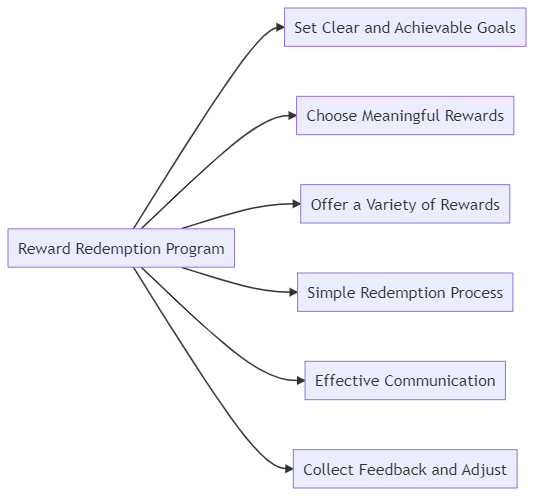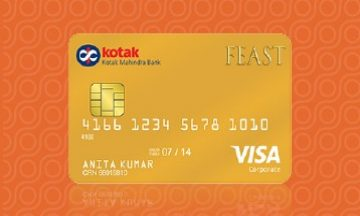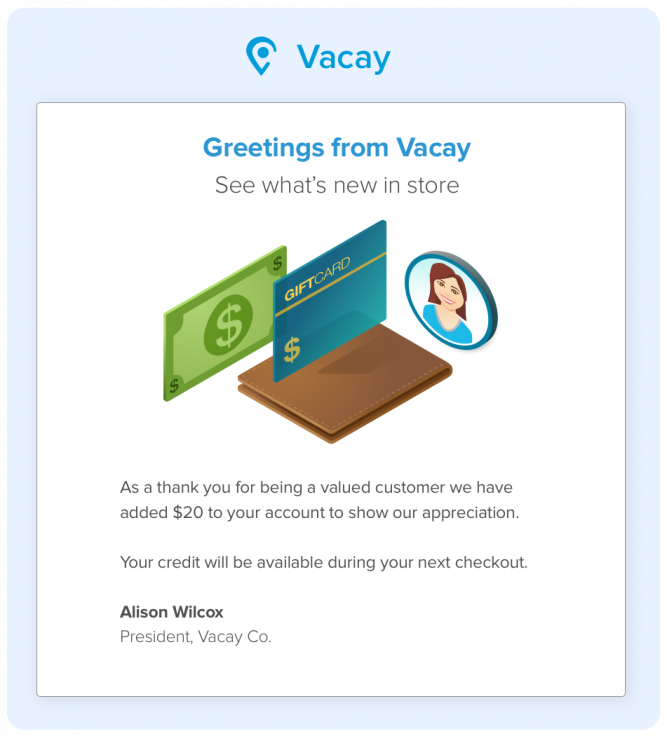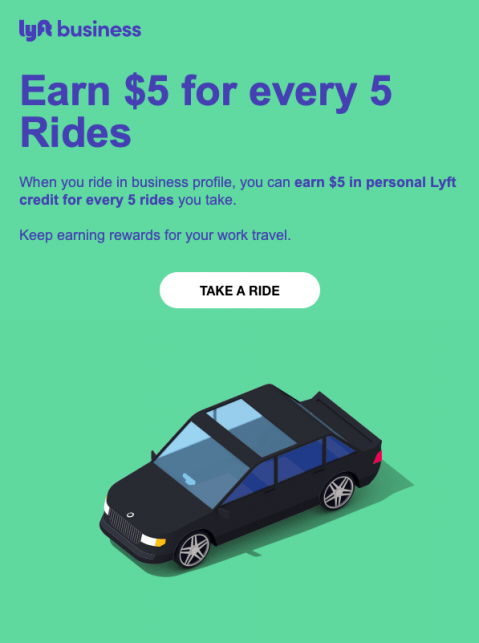
At David T Rosen, we understand how important it is for businesses to offer rewards programs that attract and retain customers. However, we also know that reward account opening and redemption can be challenging issues for many companies. This article will explore the three most significant barriers to reward redemption and provide practical solutions to overcome them.
Barrier 1: Lack of Awareness and Engagement
One of the most significant barriers to reward redemption is the lack of awareness and engagement among customers. If customers don’t know about the rewards program or see its value, they are unlikely to participate and redeem their rewards.
To overcome this barrier, businesses need to effectively promote the greater value of their rewards program and make it easy for customers to engage and earn the most rewards with free access. Here are some tips:
- Communicate the benefits of the rewards program on your website, social media, and other marketing channels.
- Offer sign-up incentives or bonus points to encourage new customers to join the program.
- Provide regular updates and reminders about the rewards program via email, SMS, or push notifications.
- Personalize the rewards program based on customer preferences and behavior to increase relevance and engagement.
Barrier 2: Complexity and Restrictions
Another common barrier to credit and reward redemption is the complexity, fees, and restrictions of the credit card issuer and program. For example, suppose customers find it difficult to understand how the credit card points give-back program works or are limited in their redemption options. In that case, they may become frustrated and abandon the program.
To overcome this barrier, businesses must simplify their rewards credit cards and card points programs and remove unnecessary restrictions. Here are how many points and some suggestions:
- Use clear and concise language to explain how the program works and what rewards are available.
- To cater to customer preferences, provide multiple redemption options, such as cashback, discounts, or exclusive experiences.
- Eliminate expiration dates or minimum redemption thresholds to make it easier for customers to redeem their rewards.
- Offer tiered rewards or personalized offers based on customer loyalty or spending behavior on increasing motivation and satisfaction.

Barrier 3: Technical Issues and Support
The third barrier to credit card reward redemption is technical issues and support. Suppose customers encounter problems redeeming their rewards or don’t receive timely and practical help. In that case, they may relinquish the program and switch their bank account or credit cards to a competitor card issuer.
To overcome this barrier, businesses must ensure their rewards program is reliable and responsive and provide excellent customer support. Here are some best practices:
- Test the rewards program thoroughly and fix any technical glitches or errors promptly.
- Provide clear instructions and guidance on redeeming rewards and troubleshooting common issues.
- Train customer support staff to be knowledgeable, friendly, and empathetic when dealing with reward redemption issues.
Best Practices for Overcoming Reward Redemption Barriers
Now that we’ve identified the three biggest barriers to reward redemption, let’s explore some effective solutions and best practices to overcome them:
Barrier 1: Lack of Awareness and Engagement
One of the biggest obstacles to reward and cash redemption is a lack of customer awareness and engagement with the rewards program. If customers aren’t aware of the program or don’t see the value in participating to earn cash or rewards, they are unlikely to redeem the most value of their money or prizes. To overcome this barrier, businesses can:
- Promote the rewards program through various channels, such as email, social media, and in-store signage, to increase awareness and engagement.
- Incentivize sign-ups with exclusive offers or bonuses, such as bonus points or discounts, to encourage customers to join the program.
- Provide regular updates and reminders about the rewards program and any new or upcoming promotions or incentives to keep customers engaged and motivated.
- Personalize the rewards program to align with customers’ interests and preferences, such as offering rewards for products or services they frequently purchase or enjoy.

Barrier 2: Complex Redemption Processes
Another significant barrier to reward redemption is the complexity of the redemption process. For example, suppose the process for redeeming a rewards or credit card points amount is too cumbersome or confusing. In that case, customers may give up or become frustrated, leading to a negative experience and decreased loyalty. To overcome this barrier, businesses can:
- Simplify the redemption process by offering multiple redemption options, such as online or in-store, and providing clear instructions and guidelines for each option.
- Remove any unnecessary steps or requirements in the redemption process, such as minimum point thresholds or restrictions on reward options, to make it as easy as possible for customers to redeem their rewards.
- Provide personalized assistance and support to customers needing additional guidance or questions about the redemption process.
- Customize the redemption process to align with customers’ preferences and needs, such as offering the option to redeem rewards in various formats, such as gift cards or cash back.
Barrier 3: Inadequate Reward Fulfillment
The final barrier to reward redemption is inadequate or ineffective reward fulfillment. Customers who have difficulty receiving or using their rewards may become frustrated and lose trust in the rewards program, leading to decreased loyalty and satisfaction. To overcome this barrier, businesses can:
- Provide prompt and reliable reward fulfillment, such as fast shipping or electronic delivery, to ensure customers receive their rewards immediately.
- Offer multiple redemption options for rewards, such as in-store or online, to give customers flexibility and convenience in using their tips.
- Provide personalized customer support and assistance for any issues or questions related to reward fulfillment, such as lost or damaged rewards.
- Customize the reward fulfillment process to align with customers’ preferences and needs, such as offering the option to choose the delivery method or format of their rewards.
By implementing these best practices, businesses can effectively address one of the biggest barriers to reward redemption and create a positive and engaging cash rewards program for their customers. The next section will discuss some bonus tips and strategies for optimizing reward redemption.

The Importance of Reward Redemption Programs
Reward redemption programs are an essential part of any comprehensive employee engagement strategy. These programs enable organizations to recognize and reward employees’ hard work and dedication, boosting morale, motivation, and loyalty. Effective reward redemption programs can also help companies to attract and retain top talent, reduce turnover, and improve overall employee satisfaction.
Benefits of Reward Redemption Programs
Reward redemption programs offer employers, consumers, and employees a wide range of benefits. For employees, in pay, for example, these programs provide a tangible way to recognize their hard work and dedication, enhancing their sense of accomplishment and job satisfaction. For employers, reward redemption programs in pay can improve productivity, reduce absenteeism, and increase employee engagement.
Best Practices for Reward Redemption Programs
To ensure the success of reward points redemption and loyalty programs everywhere, following best practices that align with your organization’s goals, values, and culture is essential. These best practices include:
- Setting clear and achievable goals for the reward redemption program
- Choosing rewards that are meaningful and relevant to employees
- Offering a variety of rewards to cater to diverse employee preferences
- Making the redemption process simple, easy, and user-friendly
- Communicating the program’s benefits and requirements effectively to employees
- Collecting feedback and making necessary adjustments to the program over time.
Bonus Tips for Effective Reward Redemption
In addition to the solutions we have discussed above, here are some bonus tips to optimize your reward redemption, after-purchase, credit for the purchase, and merchandise purchase process and maximize customer satisfaction:
- Streamline the reward fulfillment process by automating as many steps as possible, such as tracking, verification, and delivery.
- Offer exclusive and memorable experiences as rewards, such as VIP access to events or personalized gifts, to create emotional connections with your customers.
- Provide regular feedback and updates to customers on their reward status and progress, such as how many points they have earned and how close they are to their next reward.
- Monitor and analyze customer behavior and feedback to continuously improve your rewards program and address emerging issues or trends.
By following these best practices and solutions, businesses can overcome the biggest barriers to reward redemption and create a rewards program that drives customer loyalty and retention and enhances the overall brand reputation and competitiveness.

Bonus Tips for Optimizing Reward Redemption
In addition to the best practices we’ve discussed, there are some additional tips and strategies that businesses can use to optimize their rewards credit card and reward credit card redemption program and improve customer engagement and loyalty:
1. Offer Tiered Rewards
One effective way to incentivize customers to participate, spend more in the rewards program, and redeem their rewards is to offer tiered rewards based on their engagement, purchase, or spending level. For example, customers who spend more money or engage with the program more frequently could receive higher-value rewards points or exclusive perks, such as free shipping or early access to new products.
2. Provide Social Proof
Another powerful tool for promoting reward redemption and increasing customer engagement in loyalty programs is providing social proof through customer testimonials or website reviews. By showcasing the positive experiences and satisfaction of other customers, businesses using rewards today can build trust and credibility with new or hesitant customers and encourage them to participate in the rewards program and redeem their rewards.
3. Gamify the Rewards Program
Gamification is a popular and effective strategy for engaging customers and motivating them to take specific actions, such as redeeming their statement credit and rewards. By incorporating game-like elements, such as points, badges, or challenges, into the statement credit cardholders’ rewards program, businesses can make the process to redeem credit card rewards more fun and engaging for customers and incentivize them to participate and keep redeeming their rewards.
4. Leverage Data and Analytics
Finally, businesses can optimize their reward redemption program by leveraging data and analytics to understand better their customer’s consumers’ behavior and preferences for redeemed rewards. By tracking customer engagement and redemption patterns for reward points, businesses can identify areas for improvement and tailor the rewards program to better align with customers’ needs and interests.
More strategies to optimize a reward redemption program
Firstly, tracking the program’s success and regularly evaluating its effectiveness is essential. This can involve monitoring key metrics such as participation rates, the used credit cards, card redemption rates, and employee feedback. By analyzing this data, businesses can identify areas for improvement and adjust the program accordingly.
Secondly, offering personalized rewards and pay can be helpful, following ways that cater to individual employee preferences and interests. Personalized tips are often more meaningful to employees and can help to foster a more profound sense of connection and loyalty to one point within the organization.
Finally, it is essential to effectively communicate the value of the reward points redemption program to employees. This can involve using a variety of channels and methods, such as email newsletters, social media posts, and in-person meetings. In addition, businesses can encourage greater employee participation and engagement by regularly promoting the reward of redeeming rewards points and programs and highlighting its benefits.

Conclusion
Reward redemption rewards credit cards can be a powerful tool for businesses to increase customer loyalty and satisfaction with everyday purchases and sporting events, but only if implemented and managed effectively. By addressing the three most significant barriers to reward points redemption – lack of awareness and engagement, complexity and restrictions, and technical issues and support – businesses can create rewards redeem points program that is compelling, relevant, and easy to use for their customers.
At David T Rosen, we offer a range of solutions to help businesses design and optimize their rewards programs, from data analytics and customer insights to digital tools and marketing strategies. Contact us today to learn how we can help you overcome the barriers to reward redemption and achieve your business goals.
CoopBusiness is a revolutionary cooperative business-building platform that empowers individuals to become entrepreneurs, business owners, and financially independent.
As a member, you’ll receive top-level business mentorship, access to our proprietary business systems, and the opportunity to access the funds you want to turn your business ideas into reality.